|
|
|
|
|
|
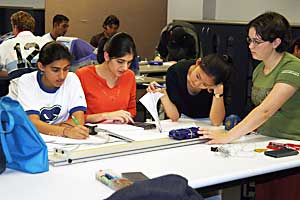 This web site exists to allow students to download notes, and to provide some useful or interesting links. The working syllabus for this subject is provided in hard copy on enrolment. It also has text book references for the different sections. Assessment and other details for this subject are listed in the first year student guide.
This web site exists to allow students to download notes, and to provide some useful or interesting links. The working syllabus for this subject is provided in hard copy on enrolment. It also has text book references for the different sections. Assessment and other details for this subject are listed in the first year student guide.
ContentsNews
|
Lecture notes. The notes linked below are provided so that you can make best use of lecture time. They should not be considered as the syllabus, nor are they a substitute for a text book.
Tutorials
This is an area in which Australian astronomers are also working. I
suspect there is a second Nobel prize in this, as the increasingly
accurate measurements (and the longer time over which these and
similar objects have now been measured) allow exquisite tests of GR.
John is talking about two neutron stars very close together. What is it for the Earth going round the sun (as asked in the problem)? I asked eminent cosmologist, Prof John Webb of UNSW who responded, quick as a flash, that the proportional rate of decay in the period due to gravitational radiation is, under general relativity, (12/5)G3m3/c5a4 for a symmetric pair, where a is the semi-major axis of the orbit. Applying this to the earth-sun dipole (complicated by asymmetry, but this would give a factor of order unity), this gives about 10-43 s-1. So for the earth, this is vastly inferior to tidal effects and even to the light pressure of the sun's radiation. (The last mentioned effect acts in the opposite direction.)
Other useful links
Miscellany
[ Search
| School
Information |
Physics
Courses |
Research
| Graduate
]
Course links
Past tests.
C Jönsson 1961 Zeitschrift für Physik 161 454-474
C Jönsson 1974 Electron diffraction at multiple slits American Journal of Physics 42 4-11.
In class, we looked at the results of a Young's experiment with individual photos. Alain Aspect's "Dualité onde-corpuscule pour un photon unique"
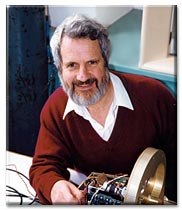
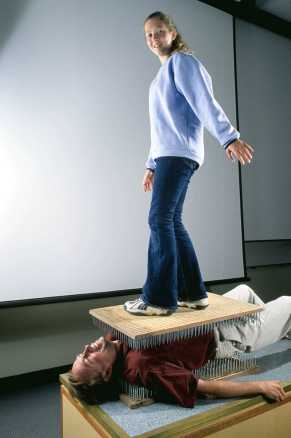
Extra reference material: an equation you need for question E1 on the 1231 tut 10. Photo courtesy Prof Dennis Isbister, ADFA, UNSW.

Physical optics
Here are a couple of photographs (courtesy Ra Inta) taken using the diffraction grating and polaroid (respectively) from your Physical Optics Kits.
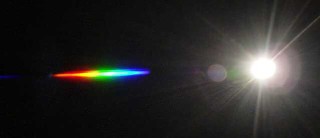
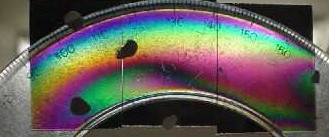
[ Resources
| Physics
! |
Physics
Main Page |
UNSW
Main Page
]
|